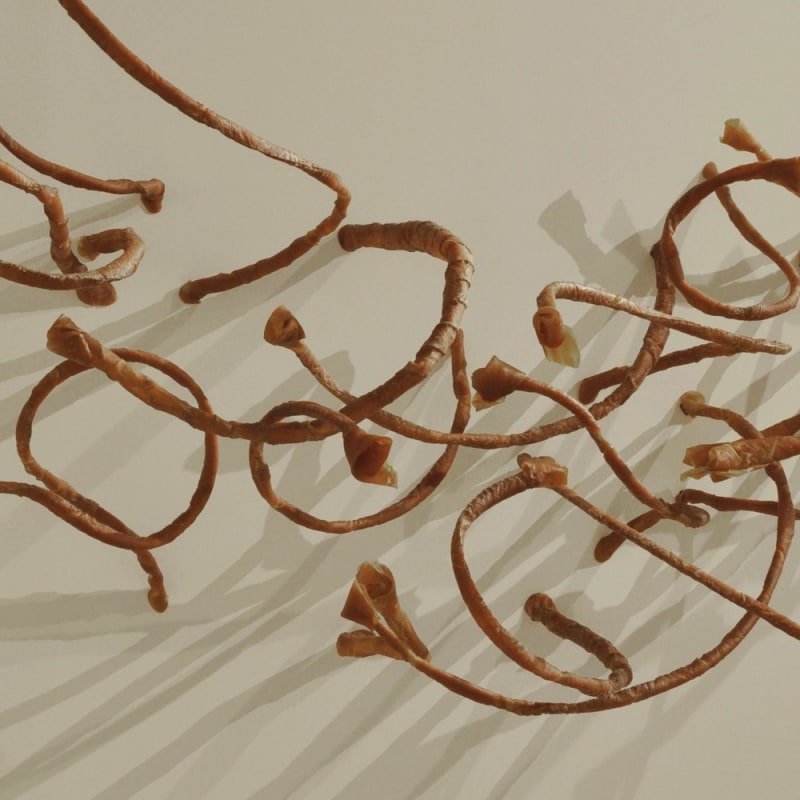
The bravado of nature and its incredible ability to sustain life is a thread that connects internationally renowned contemporary artist Ranjani Shettar's magical sculptures. Of particular interest are her fascination with the invincible sun and her affinity with light, which form the foundation of most of her creations. "The sun is capable of destroying life. But at the same time, it's important for life. as it radiates brightness and softness. These fascinating opposites in nature are what I have tried to address in my works," she says.
Shettar's love for all things natural is evident in her masterpieces. This year, her works have been exhibited at the famed Hermes Foundation in Singapore; the San Francisco Museum of Modern Art in California; and the Art Tower Mito in Japan. On November 4, the National Gallery of Victoria in Melbourne, Australia, opened its new art space with Shettar's poetically-titled exhibition, Dewdrops and Sunshine. "Dewdrops are soft yet full of warmth. Sunshine plays a critical role in my works, as it is a life-nurturing element. All my other works (such as) Touch me not (2006-2007), and Flame of the Forest (2011) are inspired by nature. Even in Heliotropes (2015-2016), the latex roots incline towards the sun as plants naturally respond to sunshine," explains the 34-year-old artist, who studied at the Karnataka Chitrakala Parishath, Bangalore. Shettar is known for her use of organic media such as beeswax, cotton, and terracotta, and others like steel, latex, rubber automotive paint, and fishing line. "I don't use any animal material, as I consider it to be an act of violence."
The ongoing exhibition in Melbourne, which continues till February 26, is an amalgamation of Shettar's works from 2003 to the present. But the one work that steals the show is her newest piece, Interplay. Vibrant cotton threads connect netted-line structures of colored beeswax and lacquered wooden spheres. While one sculpture is in hues of blue, the other is in yellow and orange. The 'interplay' of warm and cool hues signifies the orchestrated rhythm of nature's many moods and moments, which Shettar aims to bring out through these three-dimensional installations.
While nature forms the underlying theme of Shettar's works, one cannot overlook the comparison between the natural and the man-made, which she continually investigates through her elaborate suspended sculptures. For example, in Sun Sneezers Blow Light Bubbles (2007-2008), Shettar draws inspiration from the natural world as she explores how people sneeze when exposed to light. At the heart of the installation, however, is hard steel - resembling delicate soap bubbles, the installation was created with muslin-wrapped, stainless-steel armatures solidified with tamarind kernel paste, giving them a fluid form.
Thanks to her father's engineering job in Karnataka's Public Works Department, Shettar spent her formative years traveling the length and breadth of the state. Moving from one corner of the region to the other has inculcated in the artist a sweet sense of belonging. "When I step into a city, I feel I can live there. I think I can belong anywhere without exception," she suggests. Shettar currently lives in Shimoga, a district roughly 275 kilometers from Bangalore, where she is able to work on her own terms, sans the madness of chaotic city life. "Living in the village is my best bet. I am under no obligation to have any connections," says the artist.
Shettar travels 150 days a year, but when she is at home, she meticulously chalks out her installations in a two-fold manner. "Finding the right material is integral for me, followed by being able to communicate the idea. I contemplate, observe, and dig out the right materials before I start," she says. Like a scientist who sets out on an experiment to discover the right element, Shettar engages in dynamic exploration to get hold of materials (natural or man-made) for her dream-like installations. From incorporating tamarind kernel paste used by the toymakers of Kinnala to tinkering with metal, she interweaves various media and infuses them with Indian craft traditions. For her, "everything is a craft." Even the man who welds my sculpture is a craftsman because he has acquired a skill passed from one generation to another. He may have refined the technique but the tradition still retains its value," she explains. A purist at heart, Shettar doesn't have a living idol. A fellow artist's sculptures may impress her but she doesn't draw any inspiration from them. Originally trained as a sculptor, Shettar dabbled in clay, wood, plaster, and stone, and her journey from a student to a famous artist had disciplined her to a large extent. Shettar believes that luck has also played a pivotal role in shaping her career. "Somehow, I always had the opportunity to be at the right place at the right time. This has helped me exhibit as great galleries across the globe," she says.
Deepak Talwar of Talwar Gallery, New York, says "Overall of the years I have known Ranjani, she has remained firmly committed to her ideas and her art with complete disregard for the market or the mainstream. It is her genuine dedication that has allowed her to create beauty from the most humble and everyday materials, to redefine sculpture and establish herself internationally as one of the most exciting and significant artists from India." Shettar isn't too worried about reaching out to everybody at a microcosmic level. "I am not that ambitious. I am connected to the world through my art," she affirms.
-Kanika Dhawan